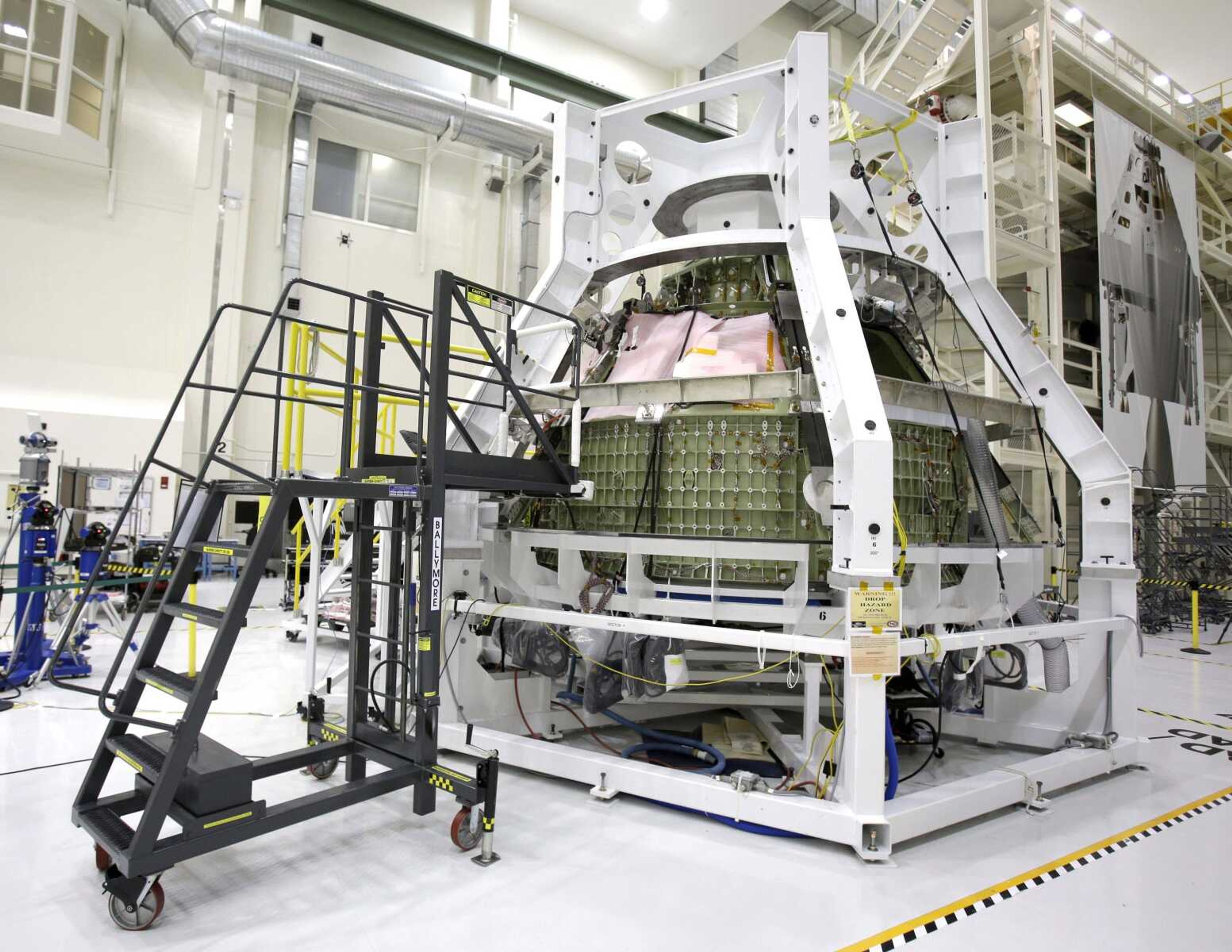WASHINGTON -- NASA is planning for a robotic spaceship to lasso a small asteroid and park it near the moon for astronauts to explore, a top senator said on Friday.
The ship would capture the 500-ton, 25-foot asteroid in 2019. Then, using an Orion space capsule, a crew of about four astronauts would nuzzle up next to the rock in 2021 for spacewalking exploration, according to a government document obtained by The Associated Press.
Sen. Bill Nelson, D-Fla., said the plan would speed up by four years the existing mission to land astronauts on an asteroid by bringing the space rock closer to Earth.
Nelson, who is chairman of the Senate science and space subcommittee, on Friday said President Barack Obama is putting $100 million in planning money for the accelerated asteroid mission in the 2014 budget that comes out this week. The money would be used to find the right small asteroid.
"It really is a clever concept," Nelson said in a news conference in Orlando. "Go find your ideal candidate for an asteroid. Go get it robotically and bring it back."
This would be the first time ever humanity has manipulated a space object in such a grand scale, like what it does on Earth, said Robert Braun, a Georgia Institute of Technology aerospace engineering professor who used to be NASA's chief technology officer.
"It's a great combination of our robotic and human capabilities to do the kind of thing that NASA should be doing in this century," Braun said.
Last year, the Keck Institute for Space Studies proposed a similar mission for NASA with a price tag of $2.6 billion. There is no cost estimate for the space agency's version. NASA's plans were first reported by Aviation Week.
While there are thousands of asteroids about 25-feet, finding the right one that comes by Earth at just the right time to be captured will not be easy, said Donald Yeomans, who heads NASA's Near Earth Object program that monitors close-by asteroids. He said once a suitable rock is found, it would be captured with the space equivalent of "a baggie with a drawstring. You bag it. You attach the solar propulsion module to de-spin it and bring it back to where you want it."
Yeomans said a 25-foot asteroid is no threat to Earth because it would burn up should it inadvertently enter Earth's atmosphere. These types of asteroids are closer to Earth -- not in the main asteroid belt between Jupiter and Mars. They're less than 10 million miles away, Braun said.
"It's probably the right size asteroid to be practicing on," he said.
A 25-foot asteroid is smaller than the size rock that caused a giant fireball that streaked through the sky in Russia in February, said Apollo 9 astronaut Rusty Schweickart, head of the B612 Foundation, a not-for-profit concerned about dangerous space rocks.
The robotic ship would require a high-tech solar engine to haul the rock through space, something that is both cutting-edge and doable, Braun said. Then NASA would use a new large rocket and the Orion capsule -- both under development -- to send astronauts to the asteroid.
There would be no gravity on the asteroid so the astronauts would have to hover over it in an extended spacewalk.
Exploring the asteroid "would be great fun," Schweickart said. "You'd have some interesting challenges in terms of operating in an environment like that."
Nelson said the mission would help NASA develop the capability to nudge away a dangerous asteroid if one headed to Earth in the future. It also would be training for a future mission to send astronauts to Mars in the 2030s, he said. But while it would be helpful for planetary defense, "that's not your primary mission," Schweickart said.
George Washington University Space Policy Institute Director Scott Pace, a top NASA official during the George W. Bush administration, was critical of the plan, saying it was a bad idea scientifically and for international cooperation.
Instead, NASA and other countries should first join forces for a comprehensive survey of all possible dangerous space rocks, Pace said.
The government document describing the mission said it would inspire because it "will send humans farther than they have ever been before."
------
Online:
NASA: http://www.nasa.gov
The Keck Institute plan: http://www.kiss.caltech.edu/study/asteroid/asteroid--final -- report.pdf
B612Foundation: http://b612foundation.org
------
Seth Borenstein can be followed at http://twitter.com/borenbears
Connect with the Southeast Missourian Newsroom:
For corrections to this story or other insights for the editor, click here. To submit a letter to the editor, click here. To learn about the Southeast Missourian’s AI Policy, click here.







